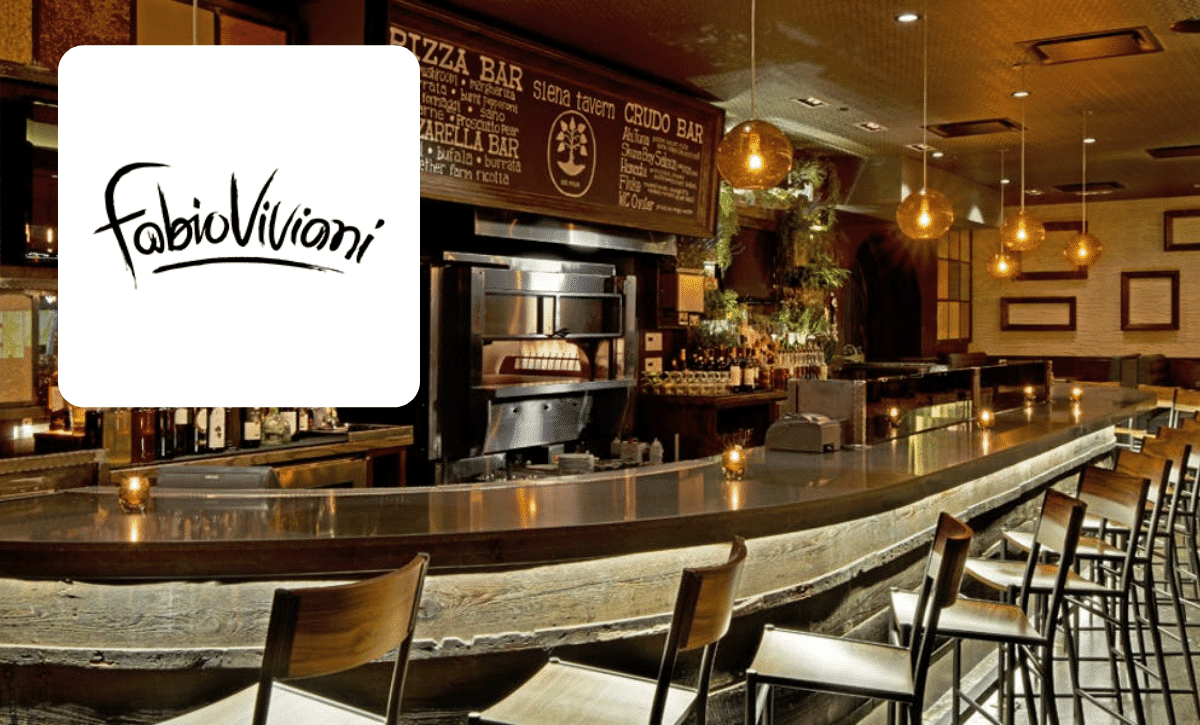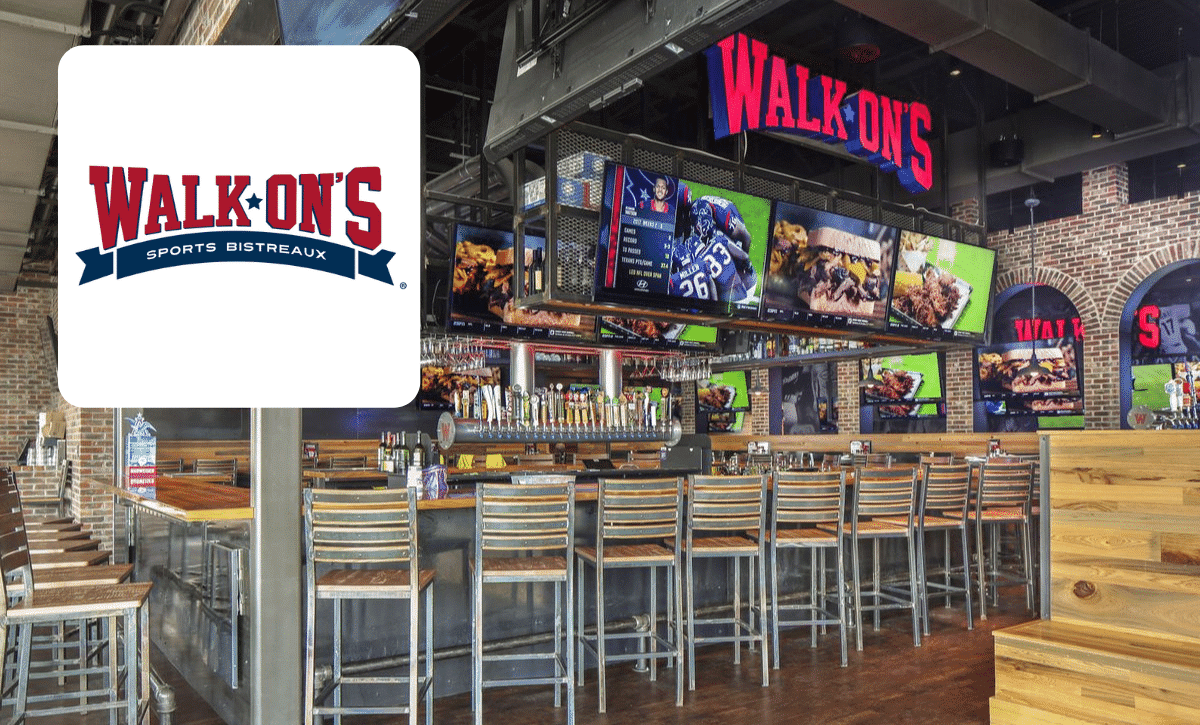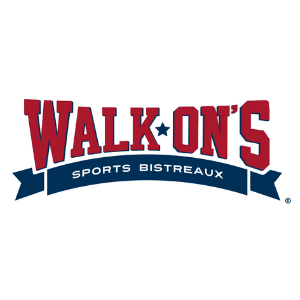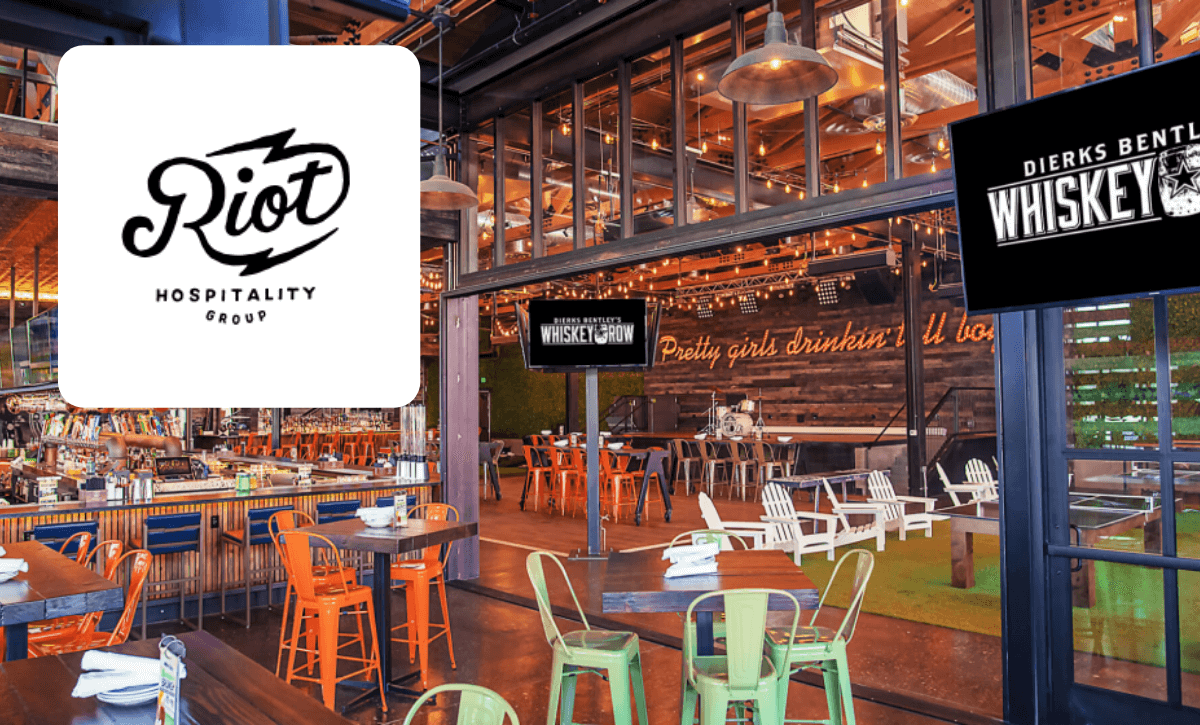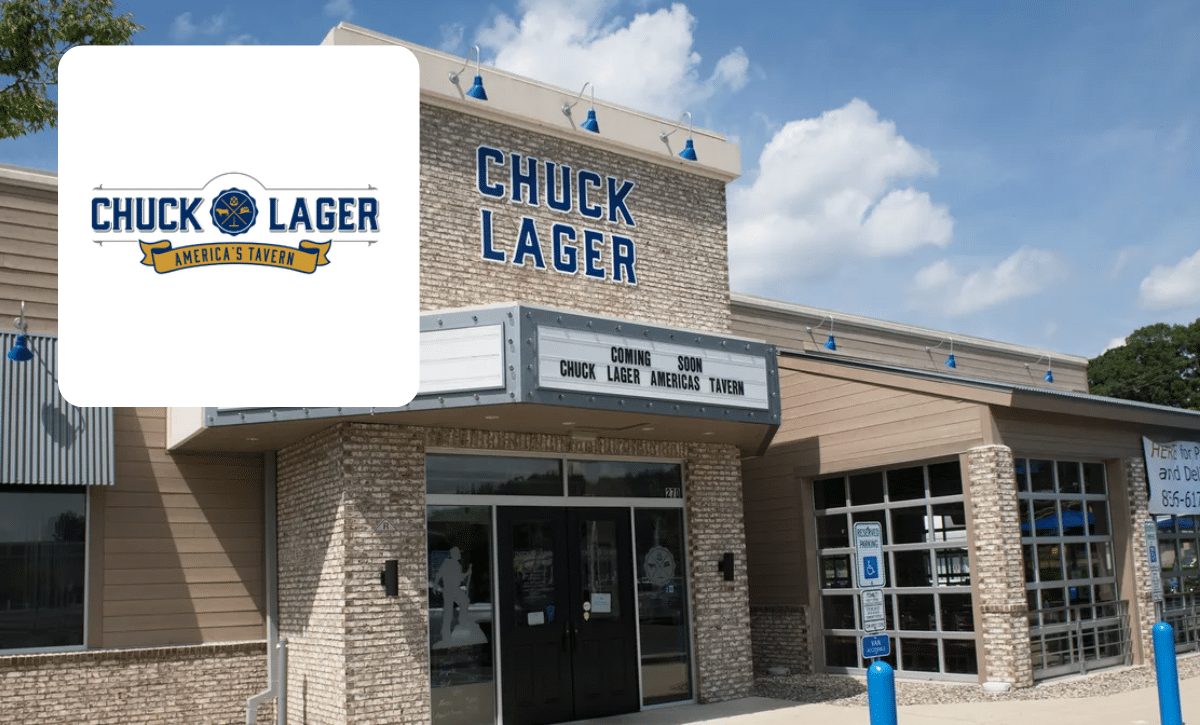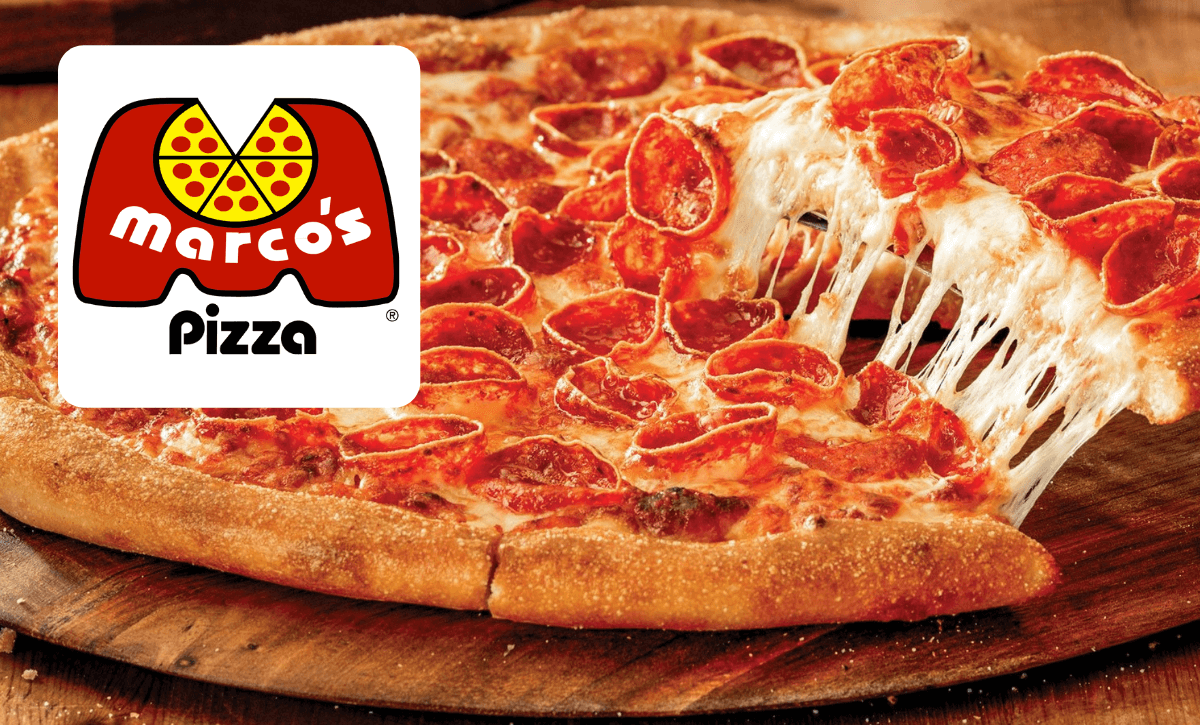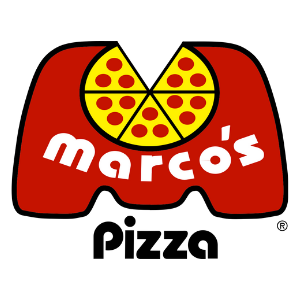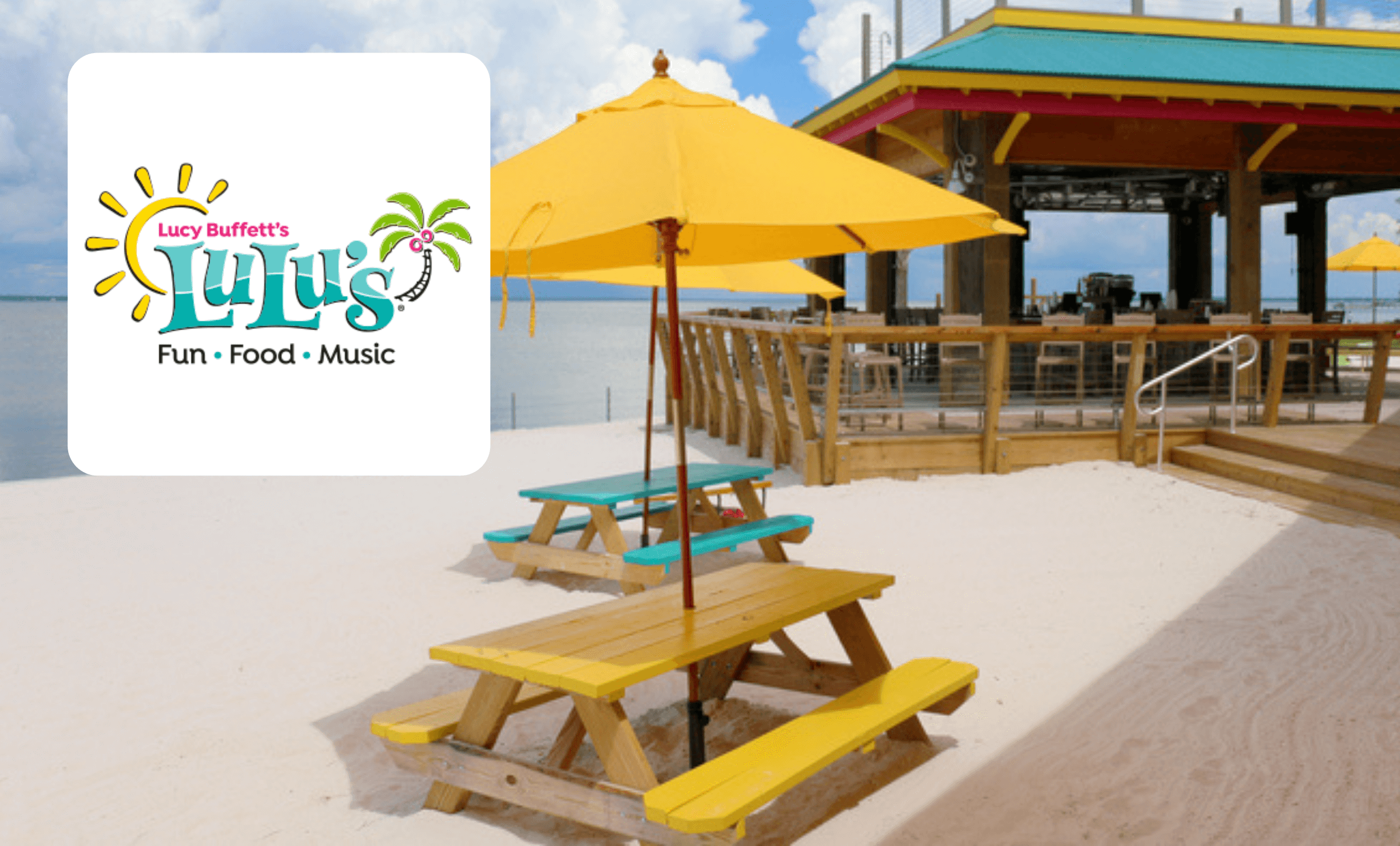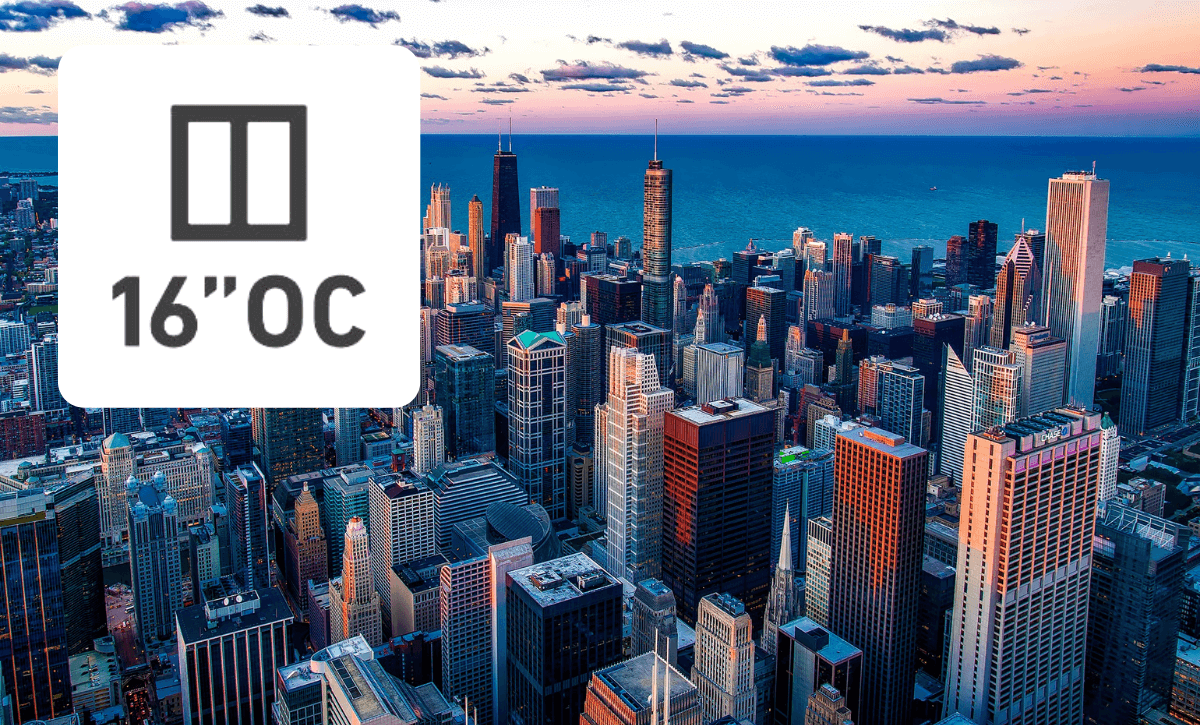Celebrity Chef Fabio Viviani Puts People First By Tipping Out with Kickfin
About the founder
Fabio Viviani is a celebrity chef, restaurateur, TV host and bestselling cookbook author. He rose to stardom after competing on the reality television competition series Top Chef in 2008.
About the company
Fabio Viviani has created a “restaurant empire,” partnering with other restaurateurs and hospitality groups across the country to launch dozens of concepts.
Number of locations
20+
Service type
Full service, Fast Casual, Bar & Nightlife
“We’ve done cash tips. We’ve done tips on payroll. We’ve tried prepaid cards. None of those keep you competitive with other employers. Kickfin does.”

Shane Farzad
Head of Operations, Fabio Viviani Hospitality
Meet Ken and Shane.
For years, these two hospitality pros have helped drive the success of Fabio Viviani Hospitality. Shane, Head of Operations, and Ken, who’s launched dozens of restaurants alongside Fabio and on his own, know everything there is to know about restaurant operations.
And — as credit card transactions continued to increase in their restaurants — they knew they needed to resolve their tip payment problem, fast.
“We never had enough cash to pay out tips,” Shane said. “Our managers were constantly going to the bank and coming back with $40,000 of cash in their pockets. It’s crazy.”
Managers also were spending way too much time on the (tedious, error-prone) admin tasks that come along with cash management: counting out cash, divvying up tips, running reports.
But inefficiency wasn’t the only concern.
“Cash was a safety risk,” Ken said. “Our managers were walking around with thousands of dollars in their pockets. Servers and bartenders are leaving with a lot of cash every night after getting tipped out.”
Ken and Shane are the first to acknowledge that hospitality can be a grind. Cash was only making life harder for their team, and they knew it was time for a change.
Kickfin for the win.
When one of their partners told them about Kickfin, Ken says it was “a no-brainer.” They quickly signed up for Kickfin and stood it up across multiple locations.
“There was very little hesitation from our employees,” Ken said. “They were actually more excited than anything else. It’s become the standard.”
Ken and Shane said Kickfin has helped their team:
- Solve the “cash problem:” All of the hassle and risk that come with cash tips are eliminated with Kickfin. Cash management is streamlined — no more bank runs or tedious tip distribution, and reporting and tracking are simple. Plus: there’s less cash handling, less cash on the premises, and less cash on their people.
- Keep managers on the floor: Managers want (and need) to be on the floor engaging with guests and overseeing operations — not stuck in the office working on admin tasks, or making trips to the bank. Kickfin allows managers to do the job they were intended to do.
- Cut labor costs: With fewer admin tasks and more efficient tip payment processes, FVH has realized a cost savings with their hourly workers.
- Stay competitive with other employers: FVH employees are happy to get instant tips right where they need them — in their bank accounts.

“Kickfin has become the standard for hospitality tip payments.”

Ken McGarrie
Fabio Viviani Hospitality
You might also be interested in
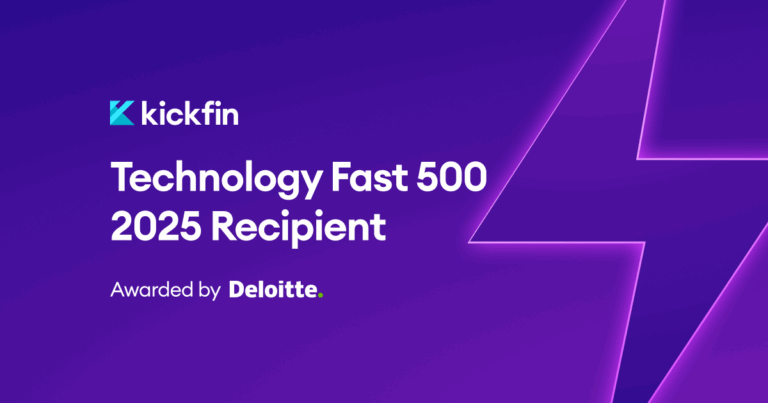
- Product and Company News
Kickfin is proud to announce that we have once again been named to the 2025 Deloitte Technology Fast 500™, a ranking of the fastest-growing technology, media, telecommunications, life sciences, fintech, and energy tech companies in North America, now in its 31st year.
Kickfin is the only company on the list purpose-built for restaurants and bars to automate tip management — marking another major milestone for our team, our partners and the thousands of restaurant operators who trust us to modernize their tip-pooling and payout workflows.
Why it matters
When it comes to tipping out employees, cash is no longer king — and needs are changing fast. Hospitality workers demand (and deserve!) faster, cashless payouts; burned-out managers need more hours in their day; and now more than ever, operators care about visibility, compliance, and employee satisfaction.
Kickfin delivers on all of those fronts by:
- Freeing managers up from bank runs and the back office, so they can focus on everything that can’t be automated.
- Ensuring employees walk out the door with their earnings already in their existing bank account, no waiting, no detours.
- Helping operators stay compliant, track everything, and uncover new efficiencies.
What sets Kickfin apart
There’s a reason Kickfin is the best-in-class tip management solution.
- Broader POS integrations: We’ve expanded our direct integrations with leading POS brands, including Toast, Square, SkyTab, Genius POS, Union, and more — so managers can pool and pay out tips in a matter of clicks.
- Enhanced tip-pool logic and flexibility: Our platform automates even the complex tip pool policies, with more tip pooling and automated reconciliation features than any other solution, while keeping the end-user experience simple and intuitive.
- Instant, cashless payouts: With fewer cash drawer runs and real time bank deposits, teams experience faster shift-close, fewer errors and improved satisfaction.
- Built-in compliance and reporting: As tip-pooling regulations continue to evolve, Kickfin empowers customers with robust features like digital paper trails and payroll integrations to ensure accuracy and compliance from end to end.
- Customer success focus: Our fully U.S.-based Customer Success team is partners with customers to make onboarding fast and easy, no matter how tricky your tip policy may be, so you get ROI right away.
A big thank you
We’re honored to be recognized by Deloitte, and even more excited about what comes next. For restaurant operators, managers and employees alike, the future of tip management is here, and we’re thrilled to be your partner.
Ready to see what automated tip pooling and instant payouts look like in action? Book a demo today!

- Product and Company News, Technology and Software
Brand new feature, coming in hot!
As part of our latest product release, Kickfin now offers Blended Payouts for even easier, fully automated tip management and reconciliation.
Why Blended Payouts Matter
Now more than ever, restaurant guests use credit cards or digital payment methods instead of cash. For many operators, that means there isn’t enough cash on hand at the end of a shift to pay out tips. But employees still want to receive their payouts immediately after clock-out.
As our customers know, Kickfin solves for those cash shortages by automating and digitizing the payout process — giving you the power to send instant, cashless payouts directly to your employees’ bank of choice, 24/7/365.
The result: minimal cash handling and risk, better accuracy and tracking — and of course, fewer bank runs.
However, digitizing payouts often results in some leftover cash in the drawer. Over time, we’ve heard from customers who prefer to use up that cash to pay out tips, then distribute the remaining tip amounts via Kickfin.
With Blended Payouts, you can do just that — and still account for every penny paid out, quickly and accurately, within the Kickfin platform.
How Blended Payouts Work
As always, all Kickfin customers can still choose to split individual payment amounts between instant payouts and payroll. Once you enable the new Cash Payouts feature, you will now be able to account for any cash tip payments that were also distributed.
Note: This feature lives within Kickfin’s Tip Calculator, which means you must have an active POS integration to use it.
- Once it’s enabled, you’ll see the new “Cash Payouts” button on the Payment Review screen.
- After clicking the button, users will be able to enter the individual cash amounts that were distributed to employees.
- Back on the Review screen, you’ll see instant payout, payroll, and cash payment amounts for each employee. All three payment methods will have their own line items and be accounted for under your Payment Details.
Watch here for a full walkthrough of the new feature.
Ready to enable Blended Payouts?
If you’re a current customer, in touch with our Customer Success team at support@kickfin.com to activate this new feature.
(Not a customer yet? Click here to see Kickfin in action and learn how you can automate tip pooling and payouts!)
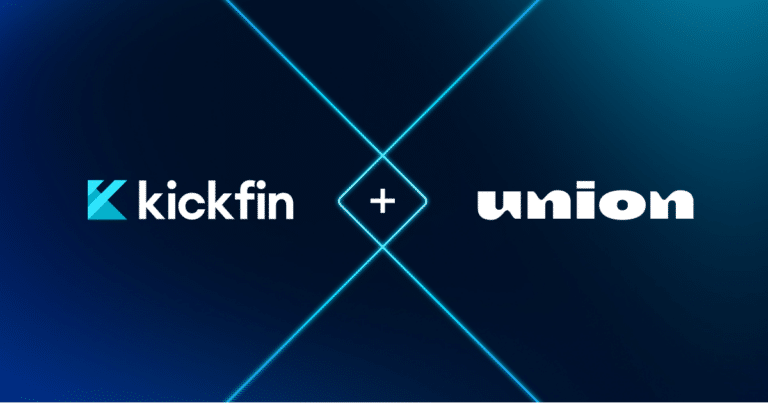
- Product and Company News, Technology and Software
Kickfin is excited to share the latest addition to our integration marketplace. Read on for all the details around our partnership with Union POS. (If you’re a current Union POS customer and you’d like to learn more about how Kickfin automates tip pooling and payouts, schedule a live demo here.)
AUSTIN, Texas (August 13, 2025)—Kickfin, the leading tip management software, today announced the launch of its integration with Union, the purpose-built POS and engagement platform powering the nation’s busiest bars, nightclubs and restaurants.
Thousands of operators use Kickfin to eliminate tedious tip calculations and remove cash from the tip distribution process so managers can move faster, track everything, and ensure accuracy and compliance.

By activating the Kickfin-Union integration, we eliminated clunky spreadsheet formulas and fully automated our tip pooling process. After going live, we reduced our time to close out by an average of 30 minutes after every shift.
The Kickfin-Union integration gives Union’s customers the power to auto-calculate tip pools in a matter of clicks and send payouts directly to employees’ bank of choice—no cash or pay cards required.
“By integrating with Kickfin, we’re giving operators the power to choose best-in-class tools that work seamlessly with their Union POS and data,” said Alex Broeker, the CEO and founder of Union. “This direct integration brings automated tip management to our operators while unlocking new opportunities for operational efficiency, employee satisfaction and simplified compliance.”
KPG Hospitality, which operates experiential bars and unique concepts throughout Texas and Tennessee, was among the first operators to activate the Kickfin-Union POS integration.
“Our venues run at a very fast pace. When you consider the time it takes managers to manually calculate tip amounts every day, after every shift, across every location, it’s a lot of unnecessary admin hours,” said Troy Cramer, the managing partner at KPG. “By activating the Kickfin-Union integration, we eliminated clunky spreadsheet formulas and fully automated our tip pooling process. After going live, we reduced our time to close out by an average of 30 minutes after every shift.”Key Features of the Union + Kickfin Integration:
- Automated Tip Pool Calculations: Calculate complex tip pools in seconds, saving managers hours of administrative work while ensuring accuracy and transparency.
- Instant Cashless Payouts: Pay out tips directly to employees’ bank of choice instantly, eliminating the need for cash handling and bank runs.
- Simplified Compliance: Maintain a digital record of every payout, making tip reporting and tax compliance straightforward.
- Enhanced Tracking: Easily track tips by pay period with comprehensive reporting capabilities.
- Streamlined Operations: Implement complex tip policies with just a few clicks through an extremely easy-to-use interface.
“Our integration with Union, a leading POS system built specifically to support the busiest venues in the industry, makes perfect sense,” said Kickfin co-CEO Brian Hassan. “Together, we’re creating a solution that saves time, reduces errors, and delivers a better experience for both operators and their staff.”
Available immediately through both Union and Kickfin, venues can integrate their systems and begin leveraging these capabilities today. To learn how this partnership can transform your tip management operations, schedule a demo at GetUnion.com or kickfin.com/demo.
About Union
Union powers a first-of-its-kind venue operating system purpose-built for the nation’s busiest bars and restaurants. More than a point-of-sale, Union connects 1,500+ establishments with 5M+ consumers and leading brands through real-time consumption data. The platform drives operational efficiency, enables frictionless mobile ordering, and facilitates brand-patron interactions that enhance venue loyalty. With $2B+ in annual transactions, Union creates a virtuous cycle where venues improve customer experiences, brands gain direct consumer engagement, and patrons enjoy personalized rewarding hospitality—transforming high-volume operations into next-gen guest experiences. To learn more about Union, visit http://www.getunion.com
About Kickfin
Kickfin is a leading digital tip management platform that automates tip pool calculations and delivers cashless tip payments directly to employees’ bank accounts. Designed to eliminate the administrative burden of tip management, Kickfin helps restaurants, bars, and hospitality venues save time, reduce errors, and improve employee satisfaction. With features like instant payments, digital record-keeping, and simplified compliance, Kickfin is transforming the way venues handle tip distribution in today’s increasingly cashless economy.

- Industry Trends, Restaurant Management
If you’re in the market for tip management software, you might find yourself comparing Kickfin and TipHaus.
Kickfin is the largest provider of instant tip payouts on the market and has processed more than $2 billion in employee payments for all kinds of restaurants, from “mom-and-pops” to national franchises — and everything in between.
Kickfin and TipHaus are both designed to digitize tip distribution for restaurants. However, there are some significant differences between the two platforms that you’ll want to consider before making a decision.
Kickfin and TipHaus: Compare at a Glance
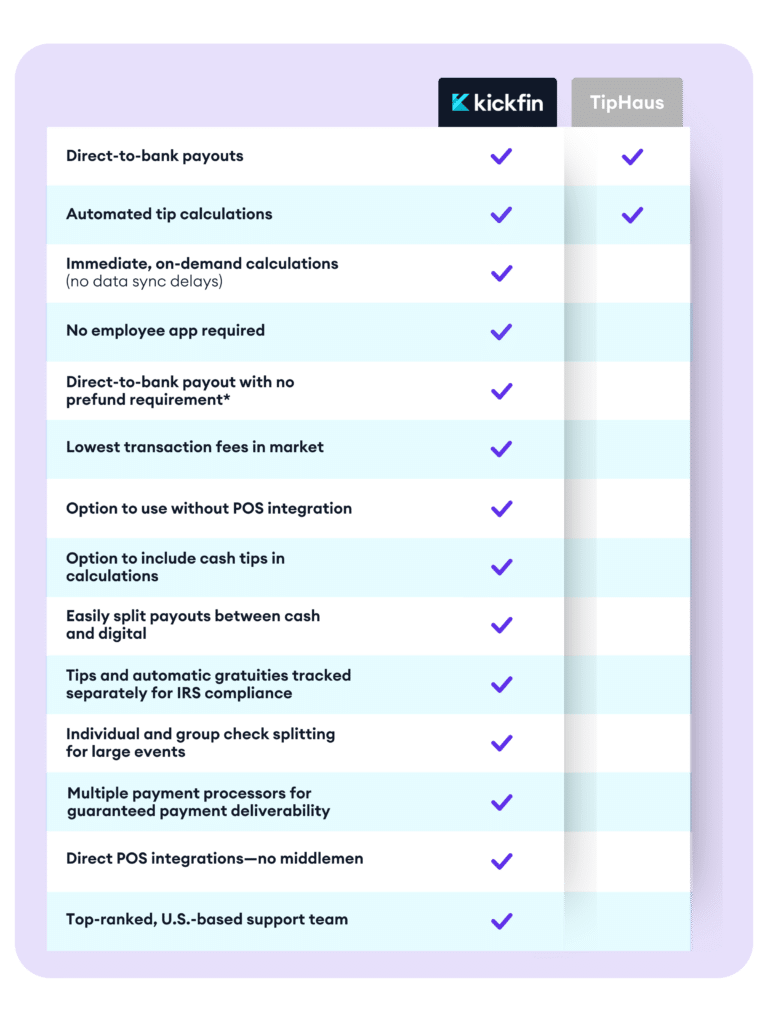
Why Do Operators Choose Kickfin Over TipHaus?
Kickfin Offers Better Pricing
Kickfin’s direct-to-bank transaction fees are more competitive than the transaction fees TipHaus quotes their customers.
This is primarily due to the fact that Kickfin is the largest provider of instant payouts in the country (validated by Visa and MasterCard data), with more than $2 billion in employee payments and multiple payment processor relationships.
Employees Prefer Kickfin
Kickfin was built to make life easier not just for operators, but also for their employees.
- No app downloads: Kickfin only requires a one-time, 30-second enrollment for employees. (No app downloads or extra phone storage needed!) Payment history and reporting data can be viewed as needed simply by logging into their browser.
- No paycards required: Kickfin also doesn’t require pay cards, while TipHaus offers “HausMoney” as a primary payout option for employees. HausMoney is essentially a pay card that employees’ tips are loaded onto. Funds aren’t available to use until the following day. HausMoney may be free for operators, but many employees don’t want to be forced to use a pay card due to the hassles of transferring funds to their own bank accounts, as well as the transaction fees and wait times they may incur. They’d prefer their earnings streamed to their accounts instantly, after every shift—which is how most Kickfin customers choose to pay out their employees.
Zero Prefunding* With Instant Payouts
With Kickfin, customers can send instant, direct-to-bank payouts with zero prefunding required.* While TipHaus does offer zero prefund, employee payouts must be sent to a TipHaus paycard (HausMoney). In other words, if you want to use a zero prefund option with TipHaus, you won’t be able to offer instant, direct-to-bank payouts to your employees.
Option to Manually Input Tip Data
With TipHaus, a POS integration is required, and all tip payment data is generated by the software’s tip calculator.
Kickfin was designed for ultimate flexibility. While many customers use Kickfin’s POS integration to auto-calculate tip amounts, some restaurants don’t need automated tip calculations and prefer to use Kickfin unintegrated. That isn’t an option with TipHaus.
Additionally, some Kickfin customers use Kickfin to auto-calculate tip pools, then manually upload other tip data on an as-needed basis. This comes in handy when you need to pay out “extra” staff, like entertainers, security guards, etc.
Easy, Accurate Distribution of Auto-Gratuities and Service Charges
Kickfin tracks Tips and Auto-gratuities separately. As a result, you can report those types of payments to payroll separately and handle them independently for tax purposes.
Why does that matter? In light of the 2025 “No Tax on Tips” legislation, tipped employees no longer have to pay federal income tax on the first $25,000 in tips earned each year. However, they do need to pay taxes on earnings from services fees, autogratuities and other compulsory charges that are not considered tips by the IRS.
(If 100% of your service charges does not go to your employees, Kickfin allows the “house account” to retain a portion of service charges, while the rest is distributed to your team.)
Enhanced Tip Calculation Functionality and Features
Kickfin’s Tip Calculator was designed to be both highly robust—so it can handle the most complex tip pooling policies—while also being incredibly simple and intuitive to use.
A few unique things about Kickfin’s Tip Calculator:
- No data sync delays: Tip calculations are immediate and on-demand. With Tiphaus, a data sync process is required which can add extra time to your tip calculation process.
- Built-in flexibility: Kickfin releases new Tip Calculator features on a regular basis based on feedback we regularly source from customers. For example, Kickfin now offers check splitting for both individual checks and groups of checks, making it easier to handle large parties and events.
- Ease of use: Customers regularly shout out our sleek, high-quality user interface compared to other platforms. Notably, we’ve made it easy for managers to review all details before hitting “submit,” ensuring the accuracy of every payout.
Cash Tip Tracking and Payouts
Many operators choose Kickfin because they don’t have enough cash on hand to pay out credit card tips, and they want to reduce the amount of cash handling in their restaurant altogether.
However, we know cash will probably always be (a small) part of the equation. Kickfin makes it easy for you to handle that with some added functionality:
Tips left in cash: If a diner leaves a pile of cash at your table, it might not get recorded in your POS. However, Kickfin allows you to record it and distribute it through our platform.
Cash payouts: Many operators may want to distribute all of the cash left in their register at the end of a business day to avoid bank runs. Again, that’s easy to do with Kickfin.
Multiple Payment Processors for Guaranteed Deliverability
For many employees, especially those living paycheck to paycheck, it’s critical that they receive their tip earnings and that they’re instantly accessible/ready to use.
TipHaus uses only a single processor. Kickfin uses multiple payment processors to ensure deliverability of payouts should a processor experience a disruption or become insolvent.
Direct POS Integrations
All of Kickfin’s POS integrations are direct API integrations, while TipHaus has been known to utilize third-party software to integrate with some POS systems. The problem with third-party software is that it can be susceptible to more connectivity issues, creating problems with data reliability.
Top-Ranked Customer Support
Kickfin has an award-winning Customer Success team that is exclusively focused on helping our operators get the most value possible out of Kickfin.
Every member of our team is based in the U.S. We provide free, personalized training and onboarding for your whole team, and when questions or issues arise, we can be reached by phone, email, text or chat. We also have a robust library of support documentation and videos that provide step-by-step guidance for every aspect of the platform.
Credibility and Recognition
At the end of the day, Kickfin’s large and fast-growing customer base speaks for itself, as do their rave reviews of the platform.
For multiple years, Kickfin has been the only tip management software that is recognized on both the Inc. 5000 and Deloitte Fast 500 lists. Kickfin has received recognition from peer software review sites like G2 and Capterra for consistently high customer rankings and reviews.
*Zero prefund is available to select customers after a credit review to confirm their fit with the zero prefund program.
Ready to take the next step?
See why thousands of restaurant pros use Kickfin to auto-calculate tip pools and pay out tips in real time, no cash or math required! Get a demo today.
See Kickfin in action!
- No contracts or setup fees
- Implement overnight
- 24/7 customer support
